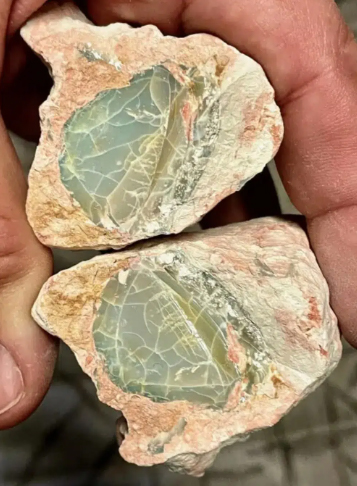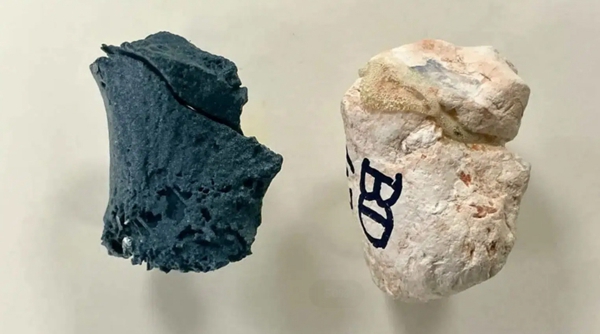30 August 2022 - Paleontologists at Flinders University in Australia have used micro-CT scanning and3D printing to look inside an unusual opaline dinosaur fossil that is about 100 million years old. This small bipedal herbivore, hypsilophodont, as it might have looked after digital reconstruction

This small bipedal herbivore, hypsilophodont, as it might have looked after digital reconstruction
During an excavation, archaeologists discovered a small fossilised dinosaur that had been emulsified. They believe this may be a new species of Australian dinosaur. The dinosaur has been studied and is a small bipedal herbivore known as a 'hypsilophodont'. The fossils were found in the opal mining town of Leitning Ridge (Lightning Ridge) in the New South Wales outback and were recovered and salvaged for scientific study in 2019.
The collaboration between the Australian Opal Centre at Lightning Ridge, and the Palaeo Pictures documentary team led by Associate Professor Paul Willis at Flinders University, will use 3D printing technology to carry out a reconstruction of the dinosaur's exterior based on the analysis of data within the opal fossils. Opals are formed when silica dissolved in water flows through the earth until it reaches a cavity in the rock. Once the water evaporates, silica deposits are left behind. Sometimes the cavities that form opals are the result of an organism being buried in sand or clay before hardening into stone. As a result, the organism can be left in the opal and form a fossil.

△Fossilised organism encased inside a plain looking opal, this is a planar view
The fossils found in Lightning Ridge are usually 'worthless' in monetary terms. However, these opals containing dinosaur fossils are of great scientific value, and Willis insists that all fossil specimens are "priceless" to science. His team has started using the latest imaging technology to learn more about any valuable prehistoric species, Willis says: "We are using CT scanning equipment to look inside the rock blocks containing the small dinosaur remains." The scans show that the dinosaur fossil is very well preserved and Willis continues, "These scans will not only allow us to better understand exactly what we have in the dinosaur skeleton, but they will be a valuable aid in the next stage of studying this specimen."

△ On the left is a 3D printed fossil generated from a CT scan, while on the right is a still intact protein fossil
He added: "The problem is how to effectively and safely remove the opal from the dinosaur fossil, and to maximise the integrity of the fossil, it is not possible to do a 'blind' removal, but ultimately by scanning the specimen, we know where to start and where to stop. " So far, around 20% of the opalised dinosaur fossil specimens have been scanned. After processing the rest, the team will study the skeleton in detail. The paleontologists hope to reconstruct these dinosaur fragments using 3D printing technology and use them to study whether an entirely new species of dinosaur has been discovered.





